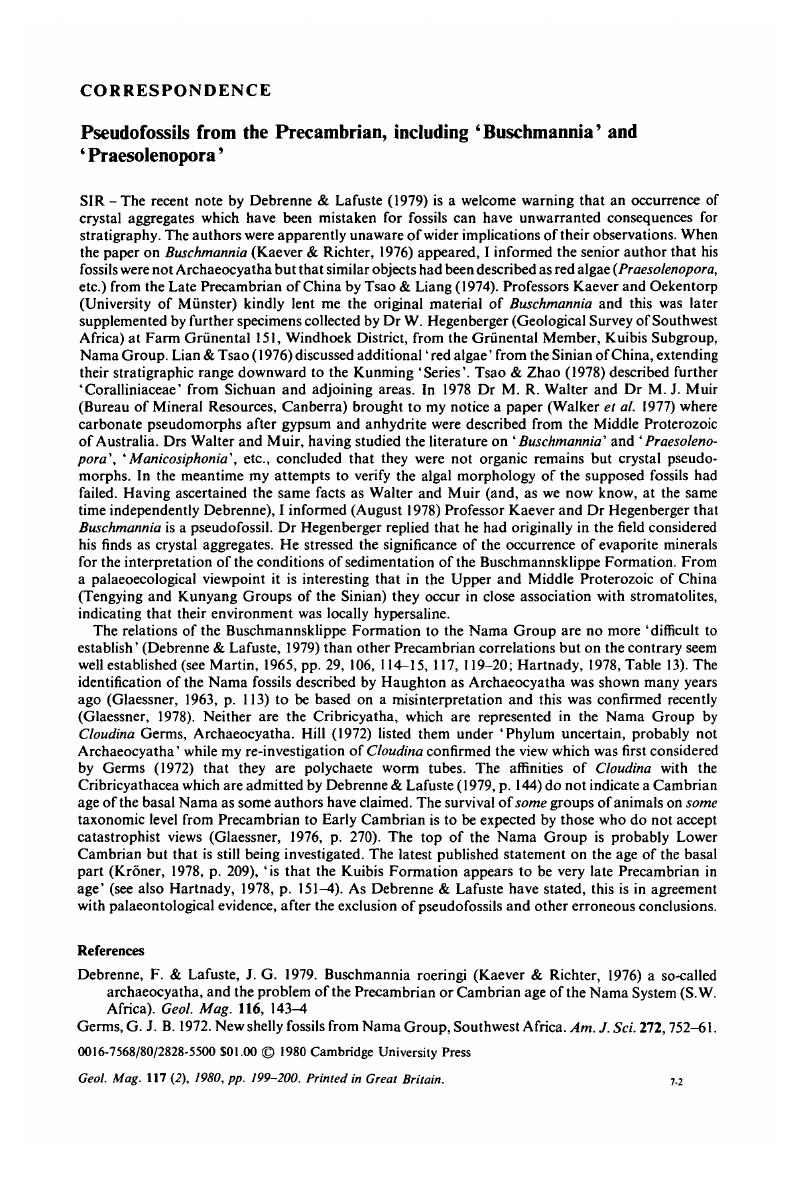Crossref Citations
This article has been cited by the following publications. This list is generated based on data provided by Crossref.
Bertrand-Sarfati, J.
and
Walter, M.R.
1981.
Stromatolite biostratigraphy.
Precambrian Research,
Vol. 15,
Issue. 3-4,
p.
353.
Debrenne, F.
Rozanov, A. Yu.
and
Webers, G. F.
1984.
Upper Cambrian Archaeocyatha from Antarctica.
Geological Magazine,
Vol. 121,
Issue. 4,
p.
291.
Gomes, Amanda L. S.
Becker-Kerber, Bruno
Osés, Gabriel L.
Prado, Gustavo
Becker Kerber, Pedro
de Barros, Gabriel E. B.
Galante, Douglas
Rangel, Elidiane
Bidola, Pidassa
Herzen, Julia
Pfeiffer, Franz
Rizzutto, Márcia A.
and
Pacheco, Mírian L. A. F.
2019.
Paleometry as a key tool to deal with paleobiological and astrobiological issues: some contributions and reflections on the Brazilian fossil record.
International Journal of Astrobiology,
Vol. 18,
Issue. 6,
p.
575.



